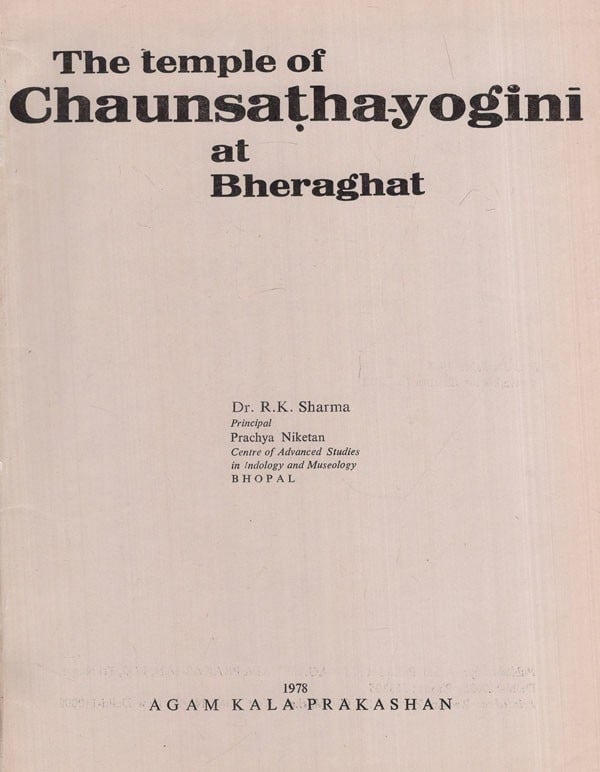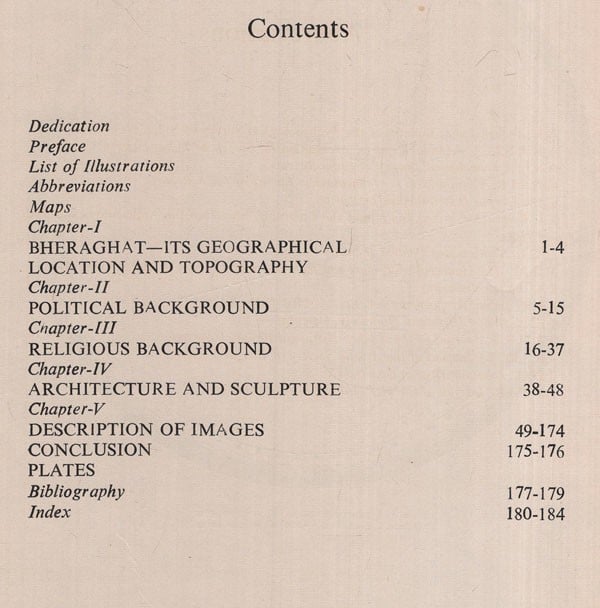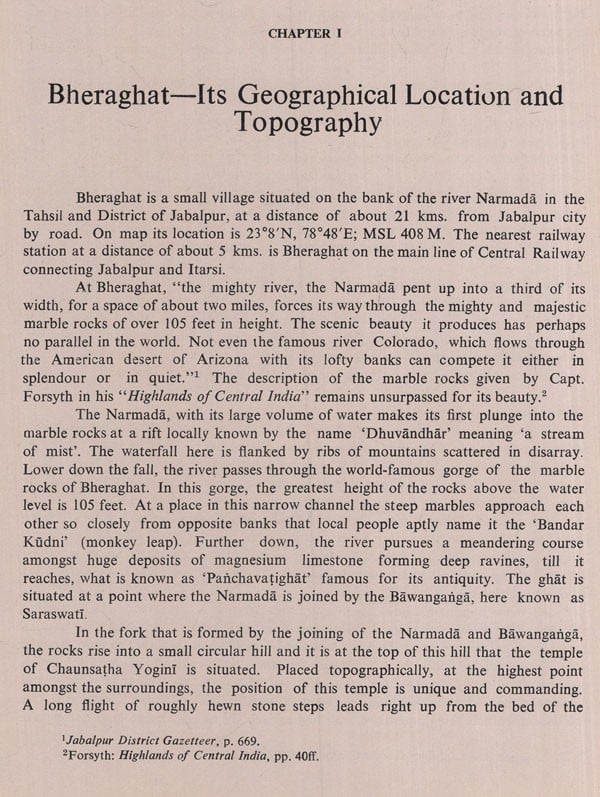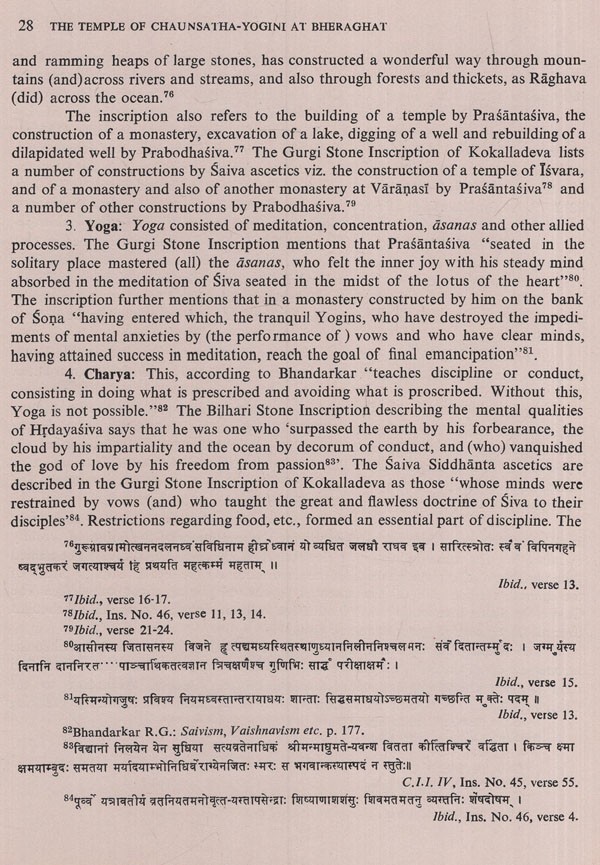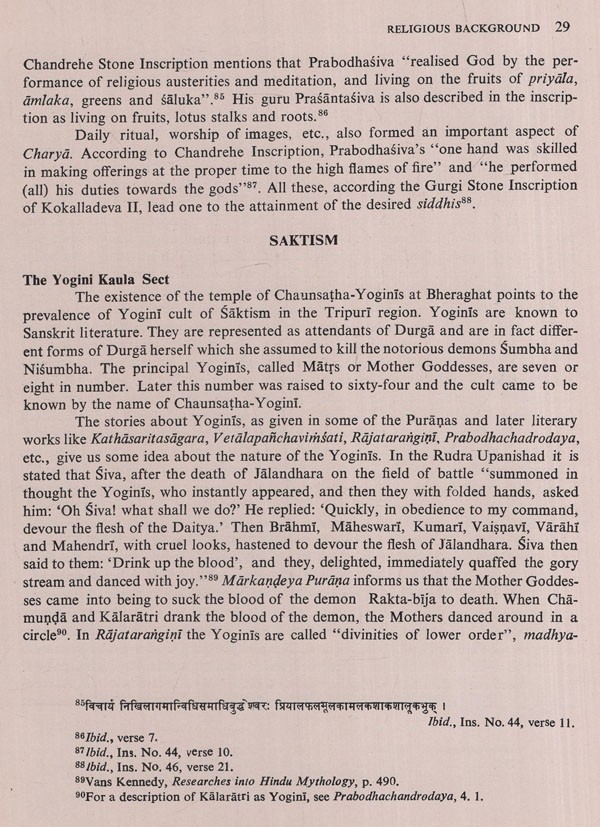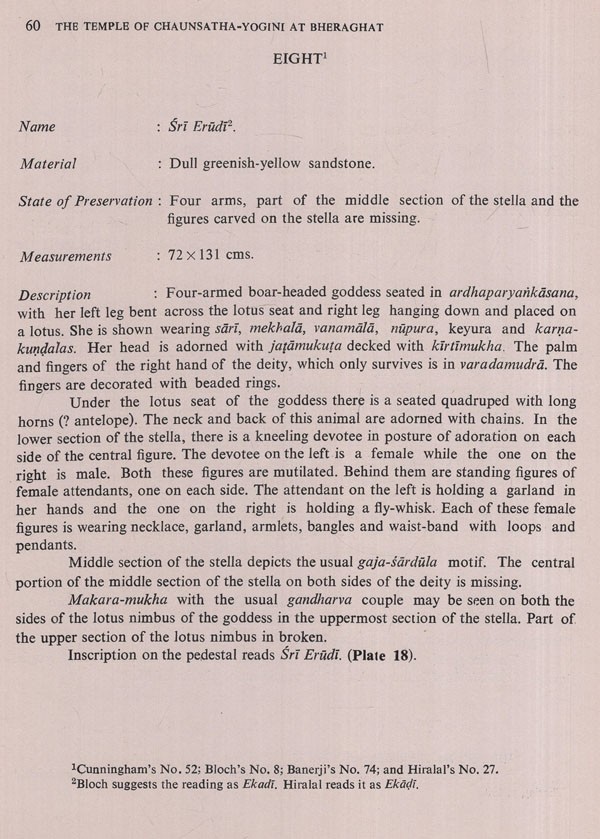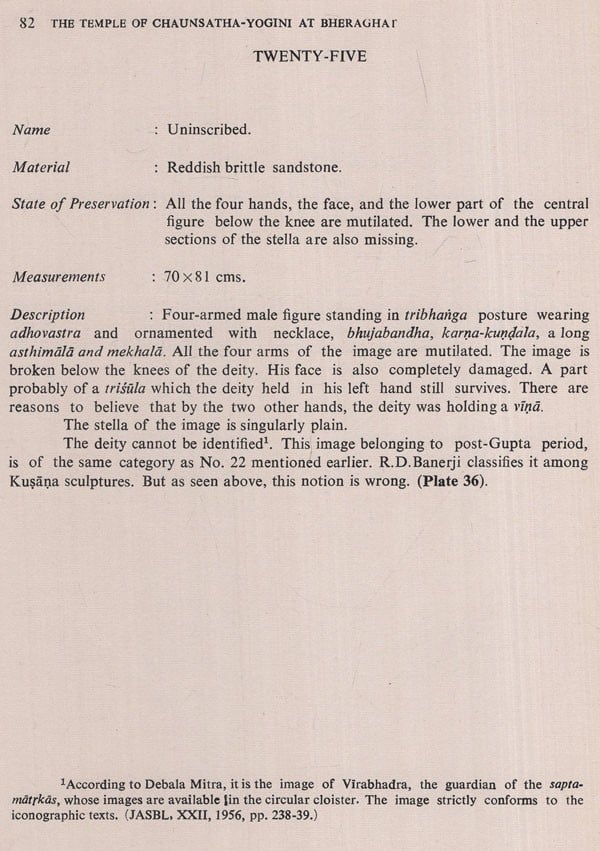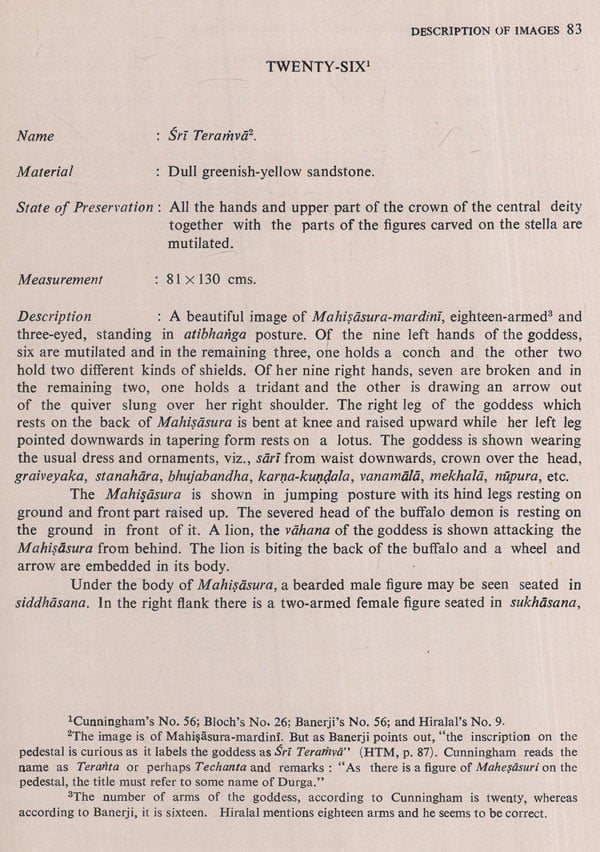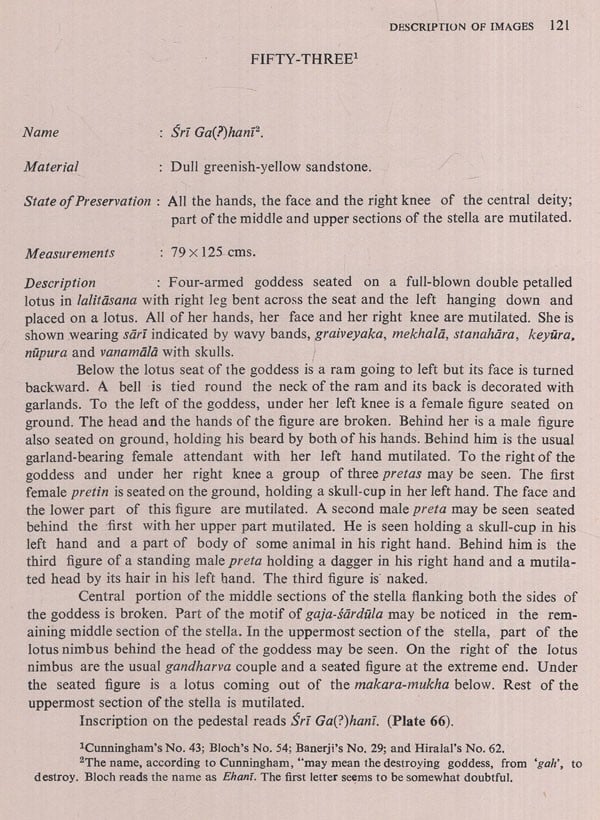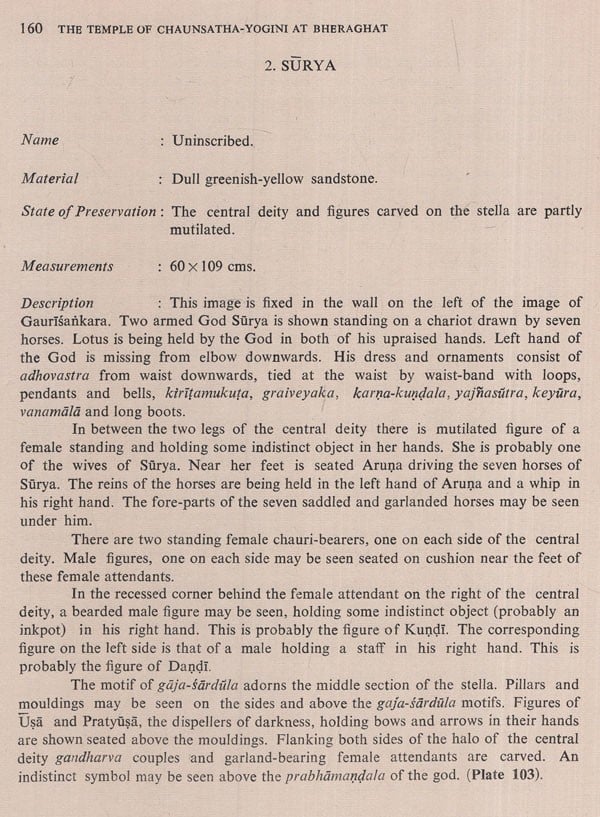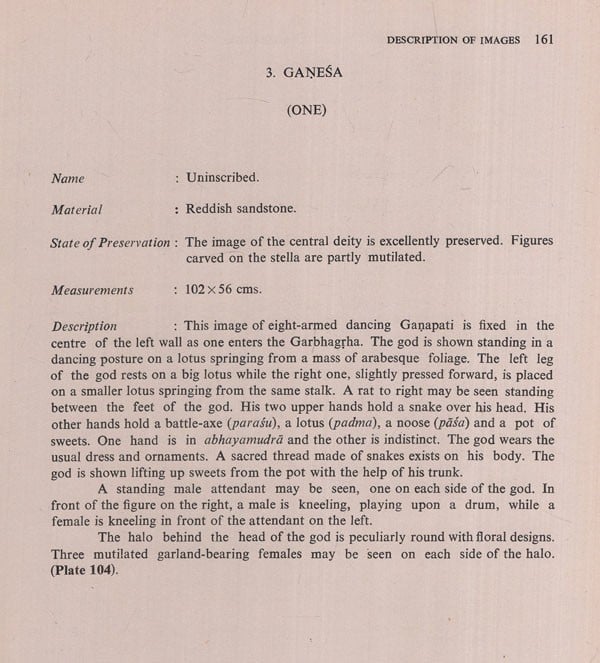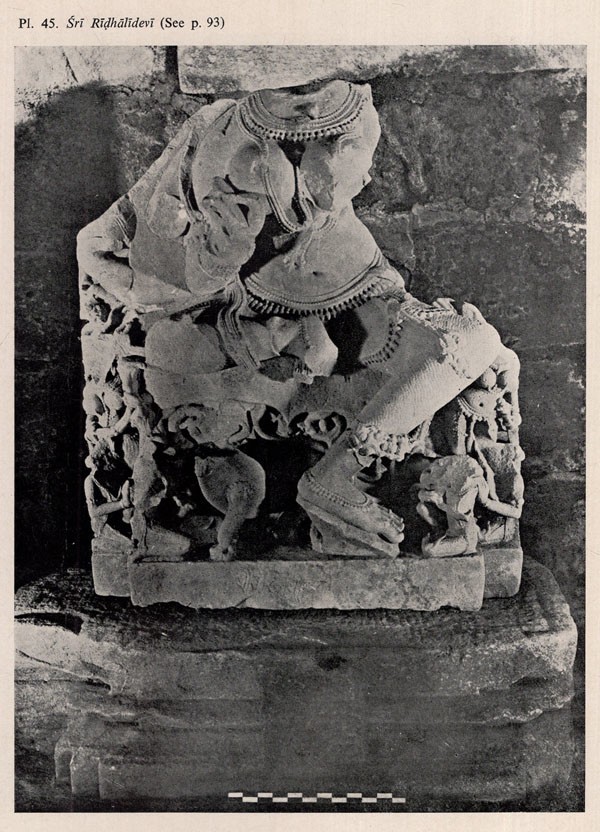
The Temple of Chaunsathayogini at Bheraghat (An Old and Rare Book on Sixty-Four Yogini Temple)
Book Specification
| Item Code: | UAS470 |
| Author: | R.K. Sharma |
| Publisher: | Agam Kala Prakashan, Delhi |
| Language: | English |
| Edition: | 1978 |
| Pages: | 284 (Throughout B/w Illustrations) |
| Cover: | HARDCOVER |
| Other Details | 10.00 X 7.50 inch |
| Weight | 840 gm |
Book Description
Amongst many obscure religious cults of early Mediaeval India, the cult of Chaunsatha Yogini was one. The main regions of the activities of the followers of this cult seem to have been modern Uttar Pradesh, Madhya Pradesh and Orissa wherein remains of nine temples of Chaunsatha Yoginis have till now been located. Of these the temple built at Bheraghat was the largest and unique in many respects. A Study of the unique architectural remains of this temple in the context of the contemporary religious and political conditions of the Tripuri Ksetra wherein it was built, is the aim of the present work.
The importance of the Bheraghat Temple lies in the fact that it supplies a long list of the yoginis whose mames are all inscribed on the pedestals of the images preserved in this temple. Such a list has not been supplied by any of the Chaunstha Yogini Temples of India which have all been either partially of fully destroyed. A comparison of this list with the lists supplied by Puranas reveals how, during the early mediaeval period, people were discovering deities out of their imagina tion and were naming them in accordance with thier own liking and local tradition.
Architectural and sculptural study of the temple reveals that Bheraghat (ancient Bhairavighat) was a seat of Sakti worship -right from the times of the Kusāņas through the Gupta and post-Gupta periods to the end of 13th century A. D. Worship of the Matrkās dominated the Kusana and the post-Gupta periods. With the rise of the Kalachuris of Tripurl and arrival of the newly emerged cult of Yogini Kaula, founded by Machchhen dranatha, Bheraghat became the most prominent centre of yogini worship in contemporary India. The story of rise and fall of the yogini cult in this region as revealed by the successive phases of construction of the temple of Chaunsatha yogini is highly fascinating. This is what has been vividly described in the pages of this book.
Dr. R. K. Sharma (b. 1932), did his M. A. in Philosophy in 1956, M. A. in Ancient Indian History, Culture and Archaeology in 1958, M. A. in History. in 1970 and Ph. D.in 1966. He obtained training in Field Archaeology in the School of Field Archaeology, Govt. of India at the excavation camp, Lothal. He is in the collegiate and university teaching for the last twenty years. Presently he is Principal of 'Prachya Niketan' the Centre of Advanced Studies in Indo logy & Museology, Bhopal.
Dr. Sharma's encyclopaedic work on Archaeology of Madhya Pradesh entitled "Madhya Pradesh Ke Puratattva Kā Sandarbha Granth" (1974), pp. 1-788. published by M.P. Hindi Granth Academy under the centrally sponsored scheme of production of standard books at the University level is an outstanding contri bution universally acknowledged. More than three dozen research papers published in various journals of Indian Historical Research are to his credit. He is Project Director of Indian Council of Historical Research Project entitled "Cultural History of Dakshina Kosala". He is also Joint Editor of Research journal "Prachya Pratibha" and Secretary of Madhya Pradesh Itihasa Parishad Dr. Sharma is Chairman, Board of Studies in Indo logy and Museology, Bhopal University, member of its Academic Council and various other bodies. He is recognised Professor and Head of the Department of Ancient Indian History, Culture and Archaeology, Indology and Museology of Bhopal University.
Amongst many obscure religious cults of ancient and early Mediaeval India, the cult of Chaunsatha Yogini was one. Though literary reference to Yoginis may be traced as far back as post-Vedic period, in the form of a regular cult worship of the Yoginis came into existence sometimes during 8th-9th century A.D. The lead in the direction was taken by the Machchhendranatha, the founder of the Yogini Kaula sect, the tenets of which are revealed in the work entitled Kaulajñananirnaya, the author ship of which is ascribed to him.
The followers of the Yogini Kaula sect tried to spread their teachings far and wide all over India though the main regions of their activities seems to have been the modern provinces of Uttar Pradesh, Madhya Pradesh, Orissa and the district of Coimbatore. Nine temples of Chaunsatha Yoginis that have been discovered till today are all located within this area. A comparative study reveals that of all these temples. the one situated at Bheraghat was most prominent.
The importance of the Bheraghat temple lies in the fact that this is the only one of its kind in India where the names of the Yoginis are found inscribed on the pedestals of the Yogini images. The ten inscribed Yogini images preserved in the Dhubela Museum hardly give any systematic idea about the names of the Yoginis. Sixty two inscribed images of Yoginis from Bheraghat on the other hand give us a fairly good picture of the list of Yoginis whose worship was prevalent during the early Mediaeval period in Central India. The list does not tally with the varying lists supplied by the Puranas and other literary works. This itself indicates how, during the early Mediaeval period, people were discovering deities out of their imagination and were naming them in accordance with their own liking and local tradition.
The temple of Chaunsatha Yogini at Bheraghat is itself built on the ruins of earlier temples and monuments of holy character, the history of which can be traced as far back as the times of the Kuşaņas. Above all, the story of the rise and fall of the Yogini cult in this region, as revealed by the successive phases of the construction of this temple and supported by literary and archaeological evidences is highly fascinating. All these problems have lured the author into taking up the study of this temple being the first in the series of studies that he proposes to take up in near future so that a complete picture of the rise and fall of the Yogini cult in ancient and early Mediaeval India may emerge.
**Contents and Sample Pages**
